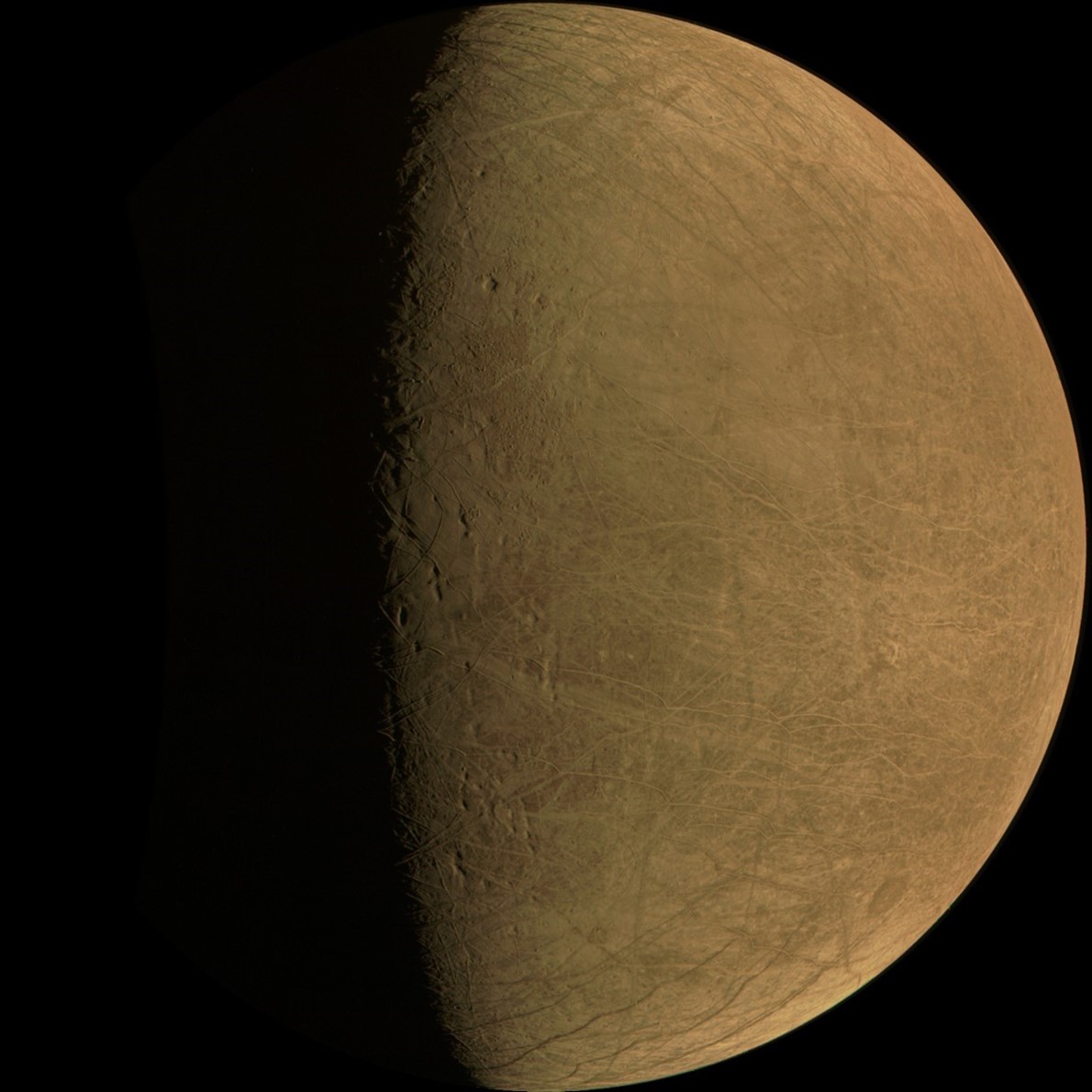Europa, the ice-encrusted moon of Jupiter,
is still everything it is cracked up to be.
Juno, a
NASA spacecraft that has been orbiting
Jupiter since 2016, zipped within 352km of Europa’s surface early on Thursday,
speeding by at more than 48,280km per hour.
اضافة اعلان
Less than 12 hours later, the four images taken
during the flyby, the closest observations of the moon since January 2000, were
back on Earth.
“They’re stunning, actually,” said Candice J.
Hansen-Koharcheck, a scientist at the Planetary Science Institute in Tucson,
Arizona, who is responsible for the operation of the spacecraft’s primary
camera, JunoCam.
In its news release, NASA highlighted one image
centered on a region near the moon’s equator, Annwn Regio, showing long
fractures that crisscross the bright, icy surface.
The alien landscape matches what was seen by earlier
NASA visitors: the two Voyager spacecraft that flew through the Jovian system
in 1979 and Galileo, which orbited Jupiter from 1995 to 2003.
The fractures pointed to the possibility of an ocean
on Europa, hidden under the ice, creating the fractures through the stress of
rising and falling tides. Other data — in particular, magnetic field
measurements indicating an electrically conducting layer like a salty ocean —
convinced planetary scientists that an ocean indeed flows on
Europa.
 A raw photo of Jupiter’s moon Europa captured by the JunoCam.
A raw photo of Jupiter’s moon Europa captured by the JunoCam.
The presence of liquid water has made Europa a
promising place to look for life elsewhere in the solar system.
The Juno flyby does not change the story.
“I would not say there was some feature that we were
like, ‘Oh, my God, that’s new,’” Hansen-Koharcheck said. Rather, the new images
offer a better view of certain parts of the moon and help fill in details.
“We’re going to be able to tell the sort of
geological history story better because you can link up different ridges and
fault lines and get a more global or regional picture,” Hansen-Koharcheck said.
“I can’t say, ‘Oh, this one thing is just amazing,’”
she said. Rather, there are many features that pique her interest. “It’s that
kind of data. There’s so much complexity of Europa itself, and then these images
really showcase that so nicely.”
All four images were available on Juno’s website.
The originals have an orange-brownish hue, but the moon would be
lighter-colored in reality. That’s because the camera was included on the space
probe to bring in participation by the public and was not primarily intended as
a scientific instrument. “We didn’t make the effort to do the white balancing,”
Hansen-Koharcheck said. “It’s not deliberate by any means.”
People around the world immediately started
downloading the images and enhancing them.

The pictures, as well as other data gathered by
Juno, will help scientists planning Europa Clipper, a NASA mission that is to
launch in 2024 and make repeated close flybys of Europa. It will also assist
the Jupiter Icy Moons Explorer, or JUICE, a European Space Agency mission
scheduled to launch next year that will study Europa and two other Jovian
moons, Callisto and Ganymede.
Juno launched in 2011 and arrived at Jupiter, the
solar system’s largest planet, in 2016. It made repeated dives close to Jupiter
to allow its instruments to probe beneath the planet’s clouds. Those revealed
never-seen-before lightning high in the atmosphere and the raining of
ammonia-rich, baseball-size conglomerations that the scientists nicknamed mushballs.
When the tasks of the primary mission were completed
last year, NASA approved an extended mission for Juno, an additional 42 orbits
of Jupiter that included close flybys of three of the large moons: Ganymede,
Europa, and Io.
Juno completed its Ganymede flyby in June 2021. It
will get close-up looks at Io, the most volcanically active place in the solar
system, in 2023 and 2024.
Read more Technology
Jordan News



